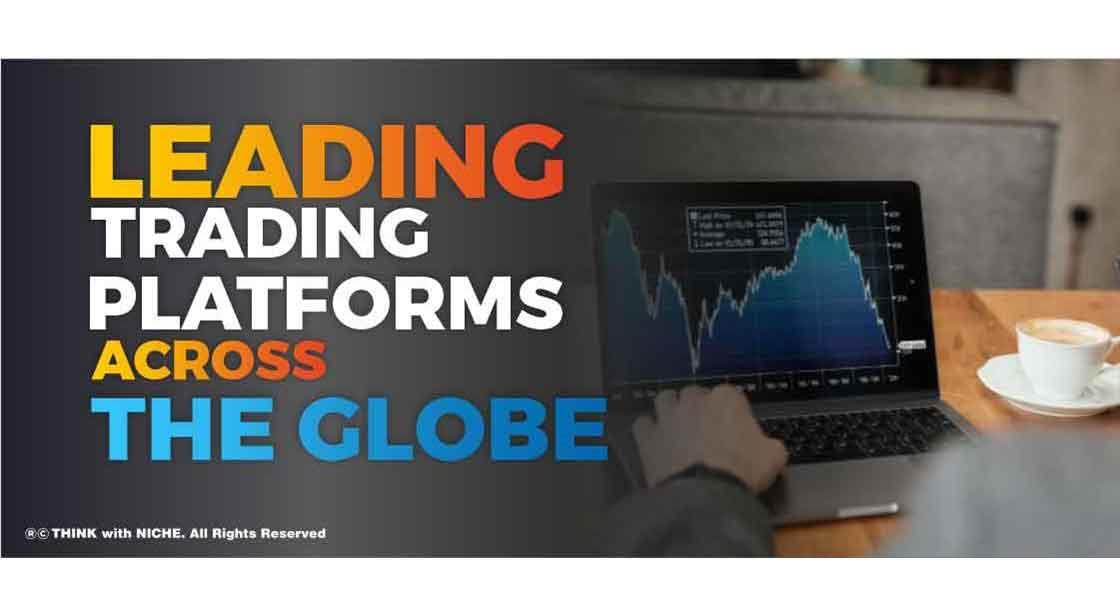Leading Trading Platforms across the Globe
In today's interconnected world, trading platforms have become the cornerstone of financial markets, enabling individuals and institutions to buy, sell, and trade various assets.
These platforms provide access to a wide range of financial instruments, including stocks, bonds, commodities, currencies, and cryptocurrencies.
With the rapid advancement of technology, trading platforms have evolved to offer seamless user experiences, advanced trading tools, and real-time market data.
This article explores the leading trading platforms across the globe, highlighting their features, innovations, and the impact they have had on the global financial landscape.
1. Evolution of Trading Platforms
1.1 From Traditional Trading Floors to Electronic Trading
In the past, trading took place on physical trading floors, where traders would gather to buy and sell financial instruments. These trading floors, such as the New York Stock Exchange (NYSE) or the London Stock Exchange (LSE), were bustling hubs of activity, with traders shouting orders and making deals.
However, with the advancement of technology, the financial industry underwent a significant transformation. Electronic trading emerged as a game-changer, replacing the traditional trading floors with computerized systems.
This shift brought several advantages, including faster order execution, increased transparency, and reduced costs. Electronic trading platforms enabled traders to submit orders electronically, matching buyers and sellers efficiently.
The introduction of electronic communication networks (ECNs) further revolutionized trading by providing direct access to market participants.
ECNs eliminated the need for intermediaries, allowing traders to interact with each other directly. This development led to increased competition, improved price discovery, and enhanced liquidity in the markets.
1.2 Rise of Online Trading Platforms
As the internet became widely accessible, a new era of trading platforms emerged – online trading platforms. Online brokers began offering trading services to retail investors, enabling them to participate in financial markets from the comfort of their homes or offices.
Online trading platforms provided individuals with access to a variety of financial instruments, including stocks, bonds, options, and futures. These platforms offered user-friendly interfaces, real-time market data, research tools, and order execution capabilities. Retail investors could now manage their investment portfolios, place trades, and monitor market movements with ease.
The rise of online trading platforms also brought greater transparency and reduced trading costs for individual investors. Retail traders could access real-time quotes, historical price data, and market news, allowing them to make informed trading decisions. Furthermore, online brokers offered competitive commission rates, making trading more affordable and accessible to a broader audience.
1.3 Integration of Mobile Trading
With the proliferation of smartphones and mobile devices, trading platforms expanded their reach by integrating mobile trading capabilities. Mobile trading apps allowed traders to access the markets on the go, providing real-time market updates, portfolio management tools, and the ability to place trades from their mobile devices.
Mobile trading platforms offered the same features as their desktop counterparts, enabling traders to monitor their investments, execute trades, and receive notifications about market events. The convenience and accessibility of mobile trading attracted a new generation of traders, who valued the flexibility of managing their portfolios anytime and anywhere.
Integration of mobile trading also brought about advancements in technology, such as touch ID authentication, biometric security, and voice-activated trading. These features enhanced the user experience and provided an additional layer of security for traders' accounts.
The integration of mobile trading has transformed the trading landscape, empowering individuals to participate in the financial markets with greater ease and flexibility. Traders can stay connected to the markets and seize trading opportunities, even when they are away from their desks.
2. Key Features and Advancements in Trading Technology
2.1 Real-Time Market Data and Analytics
One of the key advancements in trading technology is the availability of real-time market data and analytics. Trading platforms now provide traders with access to up-to-the-minute price quotes, news feeds, and market analysis tools. Real-time data allows traders to make informed decisions based on the latest market trends and developments.
With the help of advanced charting and technical analysis tools, traders can analyze historical price patterns, identify potential entry and exit points, and predict future market movements. Real-time market data and analytics enable traders to react quickly to market changes and capitalize on trading opportunities.
Moreover, the integration of artificial intelligence (AI) and machine learning (ML) algorithms has further enhanced the capabilities of market data analysis. AI-powered trading systems can process vast amounts of data, recognize patterns, and generate insights that can inform trading strategies.
2.2 Advanced Order Types and Execution
Trading platforms now offer a range of advanced order types that go beyond the traditional market and limit orders. These order types provide traders with more flexibility and control over their trades.
Some of the advanced order types include:
Stop-loss orders: These orders automatically trigger a sell order when the price of an asset reaches a predetermined level, helping traders limit potential losses.
Take-profit orders: These orders automatically close a position when the price of an asset reaches a specified profit target, allowing traders to lock in gains.
Trailing stop orders: These orders adjust the stop-loss price dynamically, trailing the price movements of an asset. They help protect profits by automatically adjusting the stop-loss level as the price rises.
One-cancels-the-other (OCO) orders: These orders allow traders to place two linked orders simultaneously, where the execution of one order cancels the other. This strategy helps traders manage multiple positions and reduce risk.
Furthermore, advancements in order execution technology have significantly improved trade execution speed and accuracy. Trading platforms now offer low-latency execution, reducing the time between order placement and execution. This is crucial in fast-paced markets where prices can change rapidly.
2.3 Algorithmic Trading and Automation
Algorithmic trading, also known as automated trading or algo trading, has become increasingly popular in recent years. It involves the use of pre-programmed trading instructions to automatically execute trades based on predefined parameters, such as price levels, market conditions, or technical indicators.



